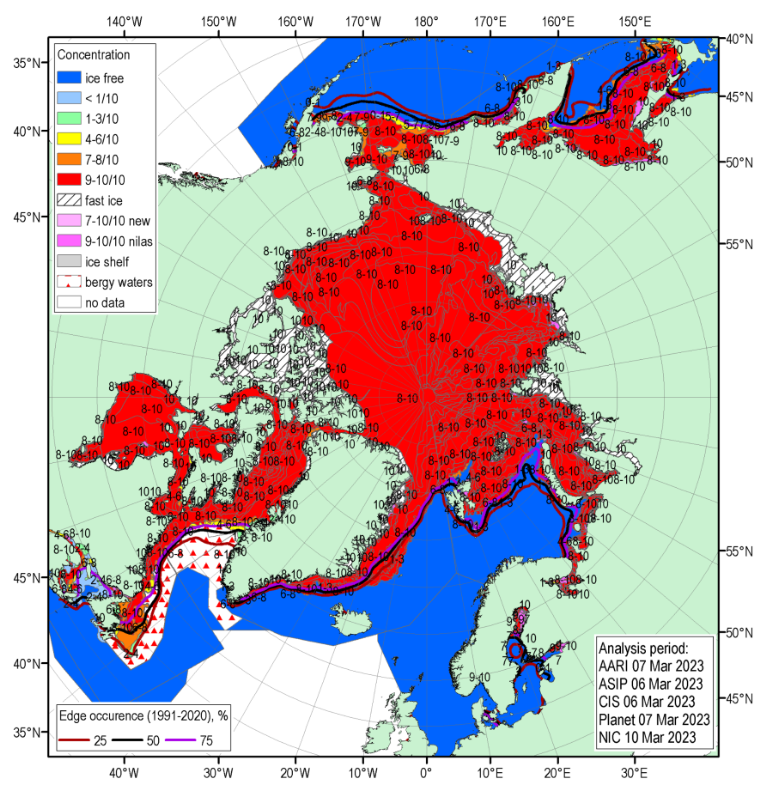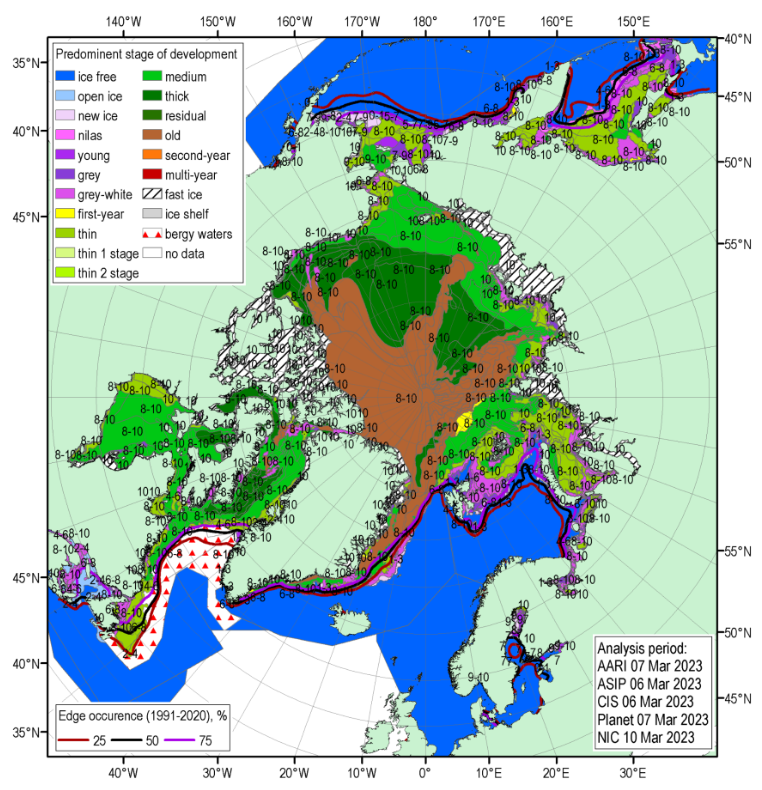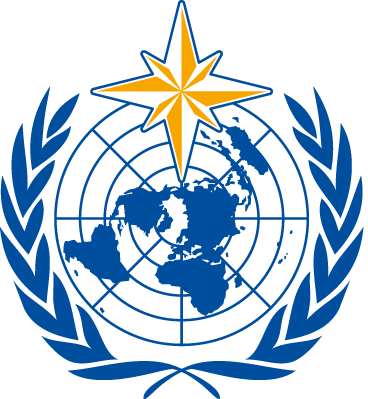This is the main result from the climate summary stated in the ACF-11 Consensus statement, for temperature, precipitation and sea ice for the period November 2022 to April 2023. View the full climate summary presentation for more details.
Temperature November 2022 to April 2023 Summary
The figure below shows November, December and January 2022/2023 (to the left) and February, March, and April 2023 (to the right) Surface Air Temperature (SAT) anomalies from the 1991-2020 reference period. The map is produced by the Arctic and Antarctic Research Institute with ERA5 as data source. The image can be clicked to show SAT for FMA 2023 together with the forecast for the same period issued in January 2023.
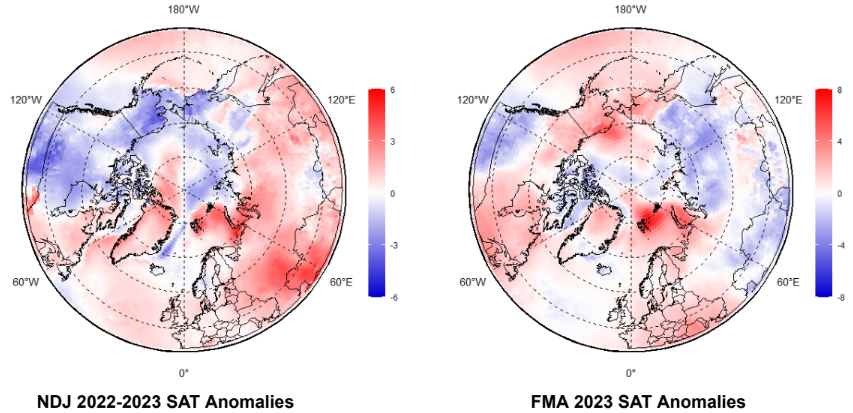
Click image to see forecast and climate summary for FMA 2023 side by side.
At the start of the winter 2022-2023 (November-December), surface air temperature showed prominent positive anomalies in the Western Nordic (4th consecutive winter) and Chukchi & Bering (10th consecutive winter) and negative anomalies in Alaska, Central & Eastern Canada and the Western Nordic. These anomalies were in reference to the 3rd WMO reference period 1991-2020, with the ranks for 1950-2022 observation period. During mid-winter (January-February 2023), strong positive anomalies were observed over Alaska & Western Canada, Central and Eastern Canada, the Eastern Nordic, and Western Siberia with negative anomalies observed over the Western Nordic region and Eastern Siberia. By the end of the winter in March – April 2023, both negative and positive anomalies were observed over Alaska and Western Canada and the Western Nordic. Negative anomalies were observed over the Eastern Nordic regions, and positive anomalies over Western Siberia.
Due to a lack of in situ surface marine observations, conclusions for the Central Arctic were based on reanalysis, including partly colder conditions in November 2022, but warmer in December 2022, and predominantly colder during February – April 2023. For the whole land-based Arctic, extremely warm conditions were observed in January 2023 and less extreme in February 2023, with preliminary ranks 1st (from 1950), though large regional and inner-season variations and changes in anomaly sign did occur.
×
Forecasted temperature for February, March and April 2023.
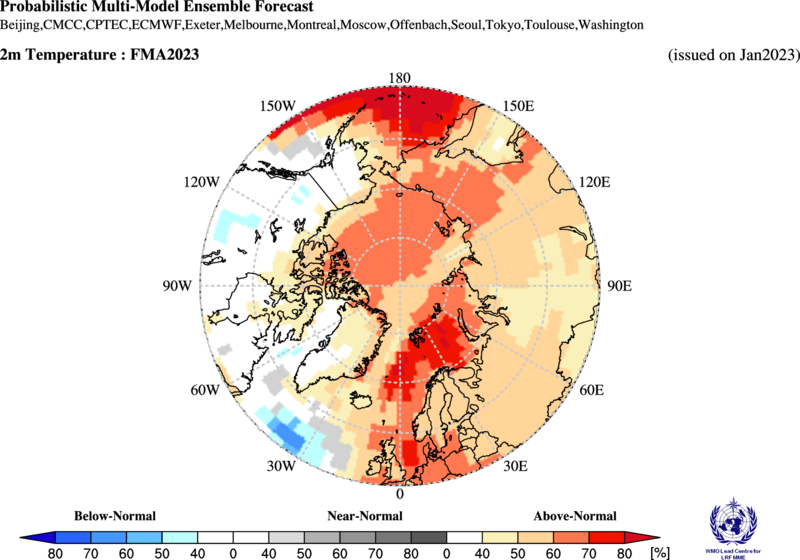
Temperature summary for the same period.
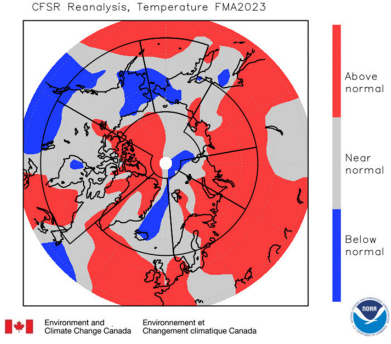
Precipitation November 2022 to April 2023 Summary
The figure below shows November, December and January 2022/2023 (to the left) and February, March, and April 2023 (to the right) precipitation anomalies from the 1991-2020 reference period. The map is produced by the Arctic and Antarctic Research Institute with ERA5 as data source. The image can be clicked to show precipitation for FMA 2022 together with the forecast for the same period issued in January 2023.
In general, during the whole season, wetter (snowy) conditions occurred in parts of the Canadian, Alaska, Bering & Chukchi regions. Drier conditions occurred in parts of the eastern and western Nordic regions and parts of Canadian and Alaska regions.
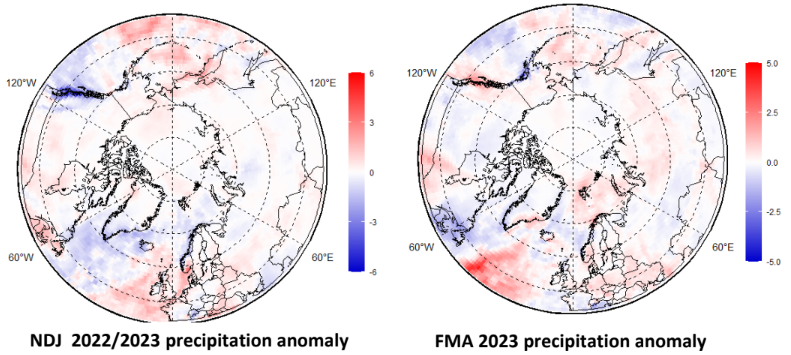
Click image to see forecast and climate summary for FMA 2023 side by side.
×
Forecasted precipitation for February, March and April 2022.
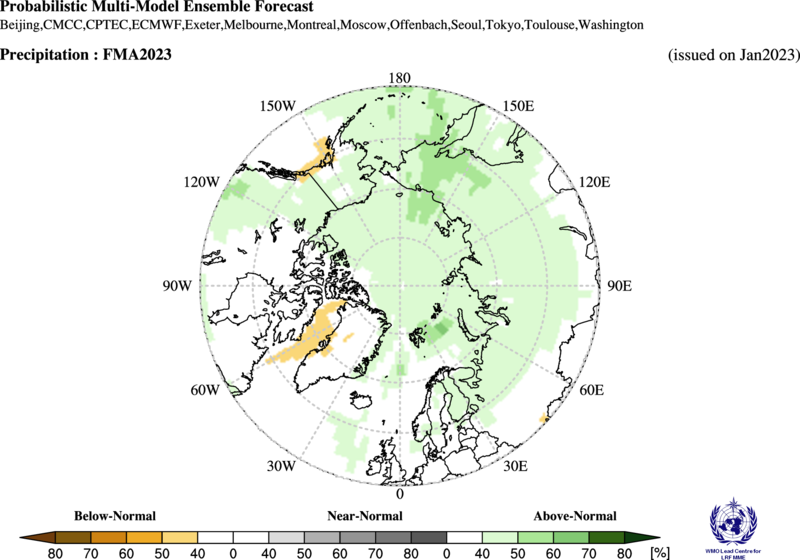
Precipitation summary for the same period.
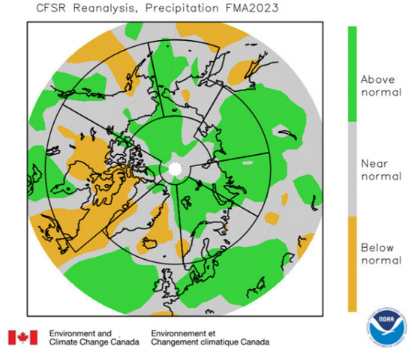
Sea Ice Summary for March 2023
The figures below shows the blended Arctic ice chart (AARI, CIS, NIC) during winter 2023 ice maximum and sea-ice edge for 6-10 March for reference period 1991-2020, with total concentration at the top, and predominant stage of development at the bottom.
Arctic sea ice reached its maximum extent at 14.62 million square kilometers (5.64 million square miles) on March 6, 2023. The 2023 maximum is the 5th lowest maximum ice extent in the 45-year satellite record. With exception of the Barents Sea, a prominent area of residual ice in late summer led to decadal normal ice extent growth in the Eurasian and Canadian Arctic. Opposite to the 2021/22 winter, the Sea of Okhotsk had an ice extent close to the 45-years median and the Greenland Sea ice extent exceeding the 45-years median in late winter 2023.
